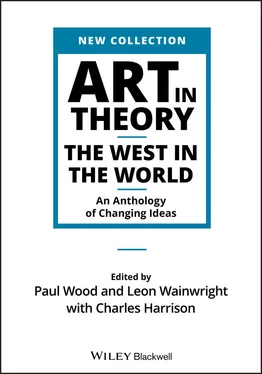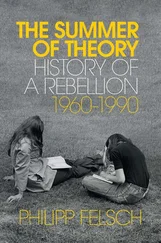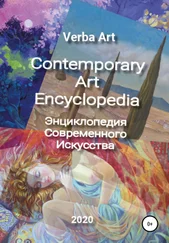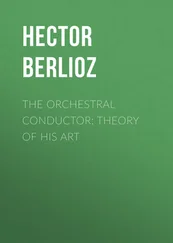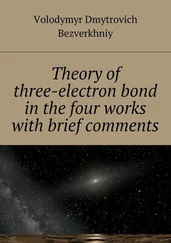Following on from those early descriptions, ‘Figures of Wealth and Power’ goes on to offer a selection of Renaissance writings describing various encounters with the East. These include a cluster of texts underlining the far from insignificant role of art in transactions between Italian city‐states and the Ottoman Empire in the late fifteenth and early sixteenth centuries. These are then followed by a range of accounts by travellers to the East in the sixteenth and seventeenth centuries, all offering vivid testimony to the wealth and high levels of material culture they encountered.
The first cluster of texts centres on a series of exchanges which the Venetians and other Italian cities had with the Ottoman Turks, who had captured Constantinople in 1453. The Ottomans were by then the principal competitors of the Italians for trade in the eastern Mediterranean, as well as forming, along with the Egyptian Mamluks, the conduit for the products of the East, including silks, metalwork and, above all, spices into Europe. The remaining texts in this section reflect the epochal shift in the East–West axis which began at the end of the fifteenth century. The combined effects of the Black Death, the end of the Pax Mongolica and the rise of the Ottomans, all fuelled attempts to find an alternative route to the riches of the East, with the result that this period sees the displacement of the Mediterranean from its status as unchallenged centre of European civilization, and the transition to pre‐eminence of the western European nations bordering the Atlantic. The crucial moments came when Portuguese navigators, who had been pressing down the coast of Africa for several decades following the capture of Ceuta in Morocco in 1415, succeeded first in rounding Cape Palmas, in West Africa, around 1460, and then, in the late 1480s, passed the Cape of Good Hope at the southern tip of Africa. Finally, in 1497–8, Vasco da Gama rounded the Cape again and, with the assistance of an Arab pilot, sailed from East Africa to the west coast of India. The major literary testament to Portuguese expansionism is the epic poem The Lusiads , published by Luís Vaz de Camões in 1572. Modelled on Virgil’s Aeniad , the poem gives a retrospective account of da Gama’s voyage, a mixture of historical record, ennobling classical myth, and Camões’s personal experience of India and east Asia, where he was between 1553 and 1567. Camões has been described as the first major European artist to cross the equator, but for the purpose of the present anthology we have selected instead a range of prose accounts by Europeans of south and east Asian art and material culture. For his part Camões echoes the prevailing tropes of the European encounter with Eastern culture: admiration for its craft skills and the value of its materials, disapproval or even disgust with its figurative art, and an overarching hostility to its religions, especially Islam. Thus, regarding da Gama’s first landfall in Calicut, Camões writes of ‘noble palaces’ among ‘groves of delightful trees’, and a ruler ‘reclining on a couch unsurpassed in its rich and delicate workmanship’, wearing a robe of ‘a cloth of gold, his diadem studded with every precious kind of gem.’ However, he also has occasion to describe a temple, itself ‘richly furbished’ but containing ‘images of their gods fashioned in wood and cold stone, the faces and colours as discordant as if the Devil had devised them’ (Camões 1997, canto VII, stanzas 46 and 47, 50, 57). In these verses, Camões encapsulates the dualism of the European response to the East, a frequently unstable mix of materially induced covetousness and spiritually fuelled superiority. It was, moreover, underpinned from the outset by violence and overwhelming firepower.
The second section of Part I, ‘Across the Ocean Sea’, marks a change of focus. Five years before da Gama’s voyage to India, the Genoese ‘Admiral of the Ocean Sea’, Christopher Columbus, financed by the Spanish monarchy, had stumbled across America in 1492, seeking a westward route to Marco Polo’s ‘Cathay’. At that historical moment, da Gama’s India mattered more than Columbus’s America, in terms of enriching Europe, but with time, it was Columbus’s discovery that was to prove the most resonant in world history. The majority of the selections in Section IB concern the culture clash consequent upon the Spanish invasion of America. As Europeans began to fan out into areas hitherto unknown or unfamiliar to them, travellers’ tales became popular, both in respect of their usefulness to commercial enterprise and their attractiveness to a growing reading public at home. Included here, in addition to the American collision, are two early accounts of sub‐Saharan West Africa, notably the city of Benin, as well as the first recorded encounter with the indigenous people of Australia by the English adventurer William Dampier.
The final section, IC ‘Scholarly Responses’, looks to a different register of reflection on the wider worlds being encountered by Europeans. Throughout the book we have tried to distinguish between two types of account, reflected in the thematic divisions of the parts. On the one hand, we have the accounts of those who actually went to new worlds and wrote about what they saw: typically, travellers’ tales, and later the narratives of missionaries, and colonists. On the other, we have consistently tried to represent attempts to make sense of the new information about the world that was flooding in (and indeed also the flood of actual artefacts), by those who stayed at home. Section IC opens with a selection from an inventory of the goods contained in the Villa Medici in Florence at the moment of the death of the patriarch Lorenzo de’ Medici in 1492. As Arrighi has observed, for the city‐states of the Italian Renaissance, ‘the conspicuous consumption of cultural products was integral to a state‐making process’ (Arrighi, The Long Twentieth Century , 2010, p. 96). Nor is this merely a conclusion drawn retrospectively by historians about the relationship between capital and culture. Arrighi cites no less a figure than Lorenzo himself, writing in the 1470s about the Medicis’ enormous expenditure on art and architecture: ‘I think it casts a brilliant light on our estate, and it seems to me that the monies were well‐spent and I am very pleased with this’ (ibid., p. 106). The section continues with a diary entry by Albrecht Dürer concerning his sight of various artefacts from the New World of Mexico, which he saw while on a journey to the Netherlands in 1520. Brief though it is, this note is an exceptional account by a major European artist of his first‐hand experience of artworks from a different culture. We have also included short extracts from much longer texts in the founding literature of the French Royal Academy, no more than glancing asides concerning Islamic and Chinese art, but with all the resonance of a Freudian slip – observations with a telling longevity in the European tradition. We also present evidence of the burgeoning desire to collect novelties, and inventories of the resulting collections and ‘cabinets of curiosities’, the earliest manifestations of what later became museums. In addition, the section includes a range of literary and philosophical attempts to speculate about the meaning of it all, both in terms of apprehensions of cultural difference, and in terms of a reflex to profit, that is to say, of proto‐colonialism.
The interconnectedness of this early modern world can be told in microcosm in the story of a single book. That small book, which is not the kind of text which can be successfully extracted for the purpose of the present anthology, now resides in the collection of the Chester Beatty Library in Dublin. It is the Tarikh‐i Hind‐i garbi , a history of the ‘West Indies’. It is described in the Beatty collection information as the earliest text on the New World to have been written in the non‐Western world. Of its two parts, the first describes North America and the circumnavigation of the globe by Magellan, while the second discusses South America, especially Peru, with a section on the silver mine of Potosi in Bolivia. But it is the story of the small book itself which is really revealing. The Turkish text described by the Beatty Library was a compilation made by a scribe in Istanbul in about 1580. This Turkish text is said to be derived from information contained in an Italian translation of several texts on America written by five earlier Spanish authors. The Turkish text was then in turn translated into Persian, and it was at this stage that the illustrations were painted. Its images, likely made from verbal descriptions by an artist who had never seen the things he was painting, include exotic plants, one a sort of flowering cactus, an animal which seems to be a tapir, various robed intellectuals and a strange abstract shape which turns out to be a mountain of silver. The little book, currently resting in a glass case in Dublin, was printed in seventeenth‐century India. Thus a sort of circuit of information, perhaps of misinformation – or better, of creative interpretation – is what seems to have occurred. The verbal and visual information travels from South America to Spain, to Italy, to Turkey, to Persia, to India, and in the course of its journey it is transformed. The book raises all sorts of questions about truth and fiction, art and artifice, facts, power, imagination and translation. All of these questions are open‐ended, but what is indisputable is that their answers will also have to travel round the world, challenging normative histories as they go.
Читать дальше
